RAVEN TAKES FLIGHT
On board the world's largest foiling superyacht
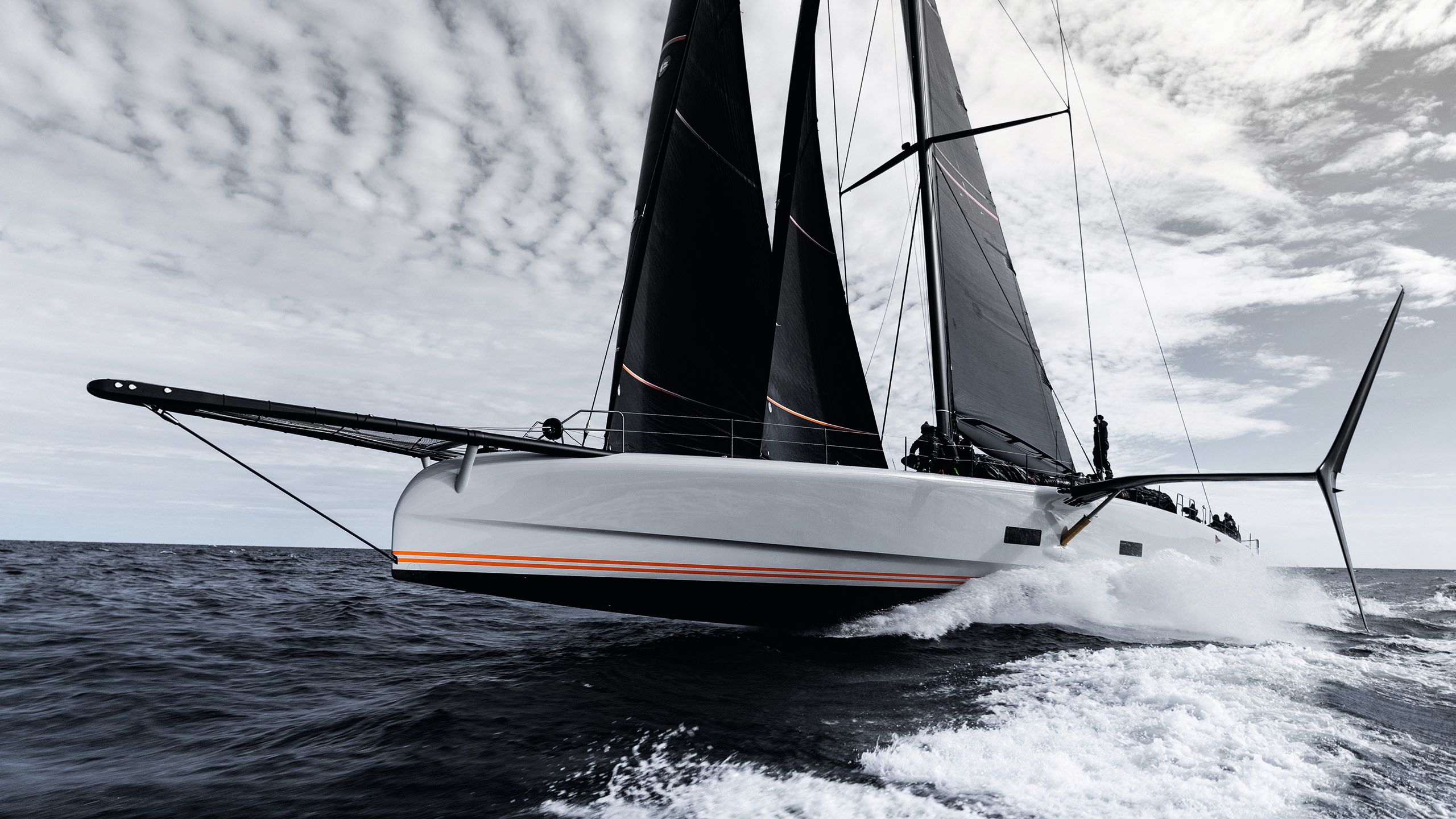
Baltic Yachts’ 33.8-metre modern marvel Raven seamlessly blends high-tech innovation and style, says James Boyd
DAN-ERIK OLSEN
Is it a bird? Is it a plane? Is it a racing yacht? The answer is, none of the above, although Raven’s owner may be a superhero for the vision and bravery to create such a groundbreaking sailing machine. Even experienced onlookers have trouble understanding what this 34-metre Baltic actually is. Flip-up foils resemble those fitted on the flying AC75s in the America’s Cup and perhaps indicate Raven is a foiling maxi racer destined for ocean racing. In fact, this isn’t the case.
While she has a strong racing pedigree from naval architects Botin Partners (currently designers for the Alinghi Red Bull Racing America’s Cup challenge), carbon fibre-Nomex construction and top gear from North Sails and Harken, Raven is a cruising superyacht; her owner has no plans to race.
“I wanted to do a superyacht, but a fast one with a nice interior and that led to foils,” he explains. “I wanted a boat that was fast, but with an interior that we could enjoy – you can sit inside and be comfortable.”
His fleet is currently bookended by a 126-metre Lürssen expedition yacht and a ClubSwan 36 racer, but at present he is very much enjoying the innovation and technical challenges of working up his unique vessel with the prospect of making long- distance, high-speed passages, perhaps attempting some records. But he is in no hurry.
TOM VAN OOSSANEN
Is it a bird? Is it a plane? Is it a racing yacht? The answer is, none of the above, although Raven’s owner may be a superhero for the vision and bravery to create such a groundbreaking sailing machine.
Even experienced onlookers have trouble understanding what this 34-metre Baltic actually is. Flip-up foils resemble those fitted on the flying AC75s in the America’s Cup and perhaps indicate Raven is a foiling maxi racer destined for ocean racing. In fact, this isn’t the case.
While she has a strong racing pedigree from naval architects Botin Partners (currently designers for the Alinghi Red Bull Racing America’s Cup challenge), carbon fibre-Nomex construction and top gear from North Sails and Harken, Raven is a cruising superyacht; her owner has no plans to race.
“I wanted to do a superyacht, but a fast one with a nice interior and that led to foils,” he explains. “I wanted a boat that was fast, but with an interior that we could enjoy – you can sit inside and be comfortable.”
His fleet is currently bookended by a 126-metre Lürssen expedition yacht and a ClubSwan 36 racer, but at present he is very much enjoying the innovation and technical challenges of working up his unique vessel with the prospect of making long- distance, high-speed passages, perhaps attempting some records. But he is in no hurry.
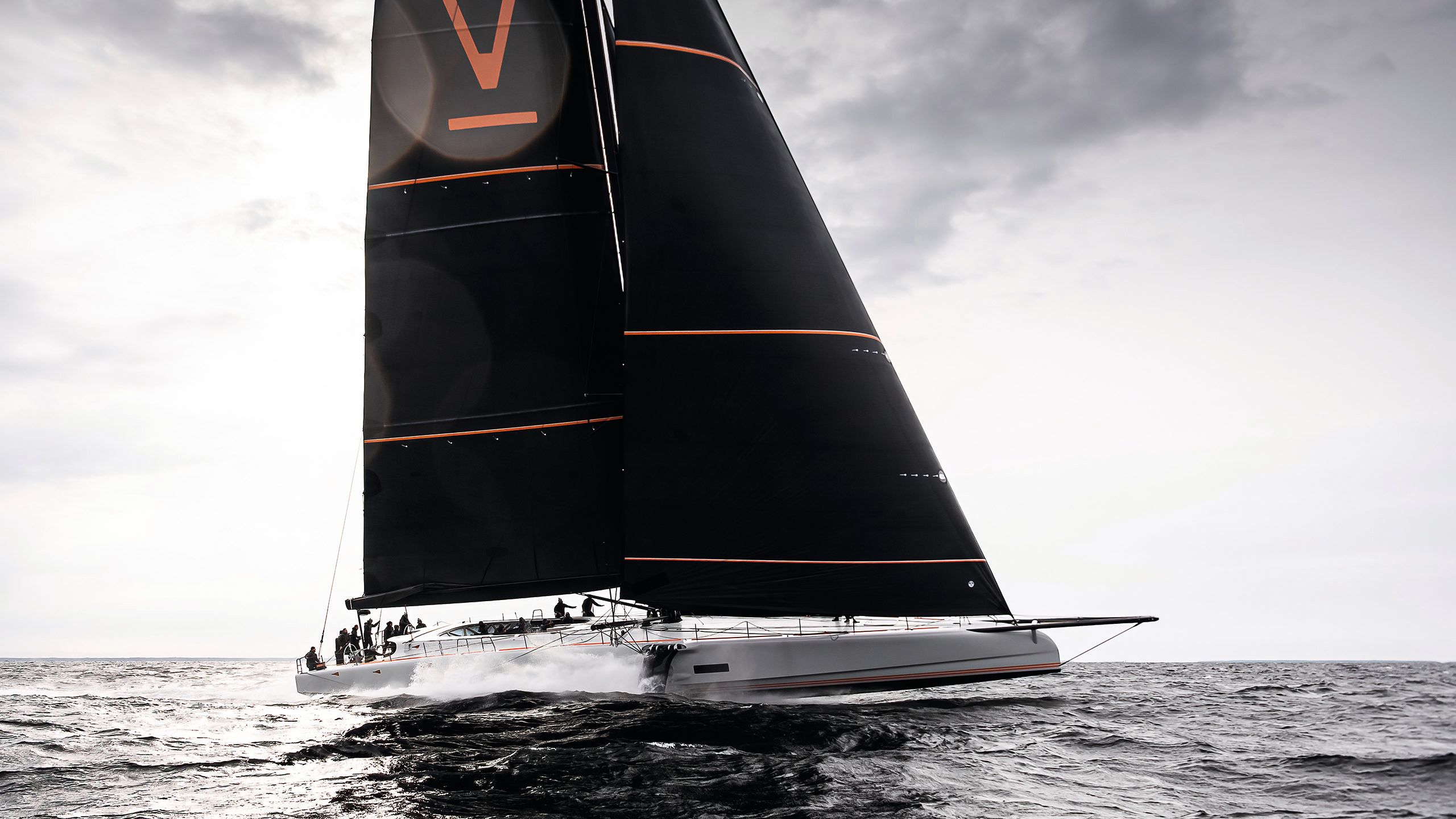

DAN-ERIK OLSEN
DAN-ERIK OLSEN
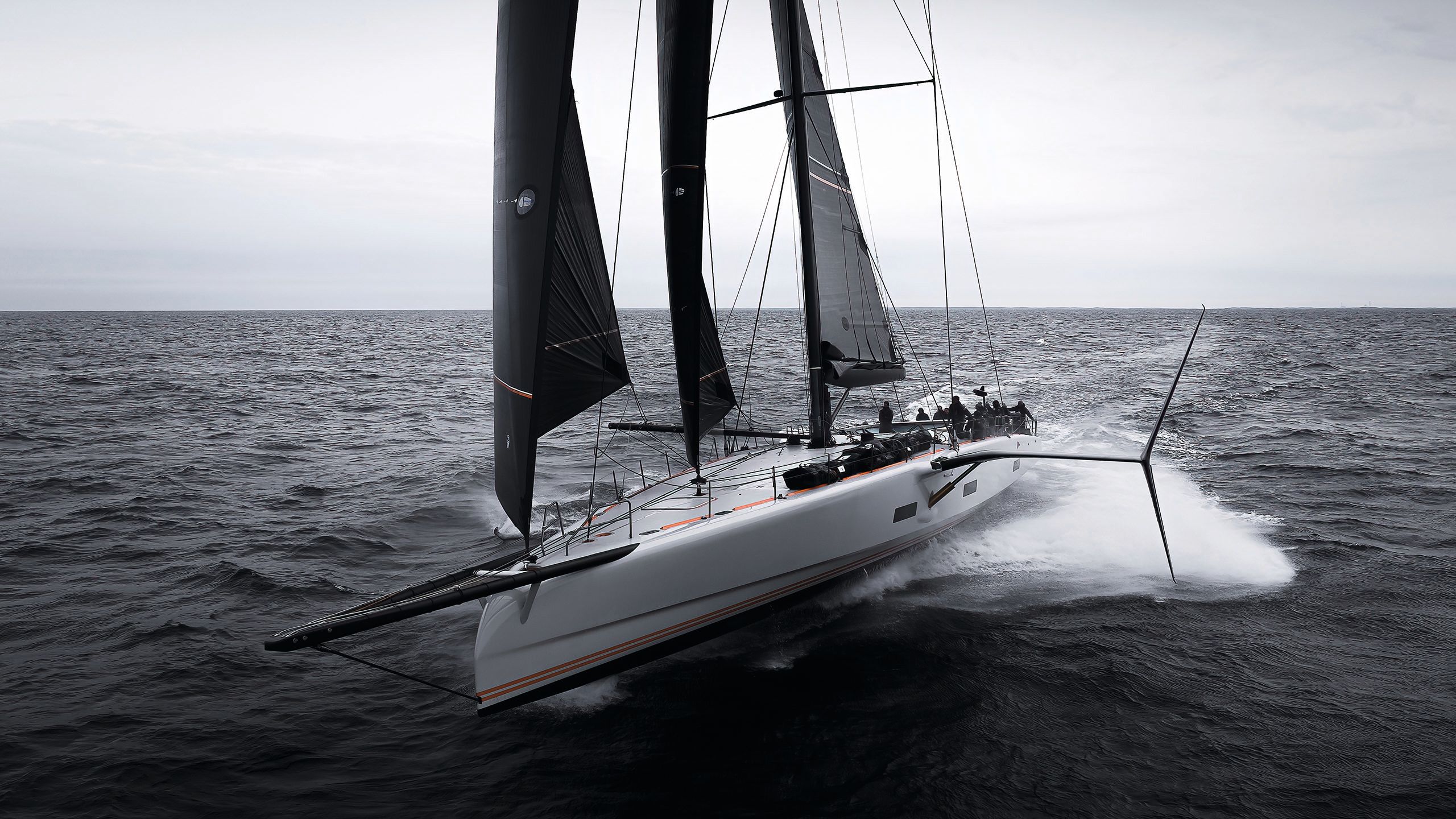
TOM VAN OOSSANEN
TOM VAN OOSSANEN
While race boats are stripped out with pipe cots and raw carbon interiors, Raven has a well-appointed interior with all the styling flair you would expect from Jarkko Jämsén, designer of the award-winning 77-metre Feadship Pi and its 100-metre successor Project 824.
He brought in Botin Partners for naval architecture, who recommended Raven’s foil configuration. Garth Brewer of A2B Marine Projects, who calls the boat the equivalent of a high-end supercar, had to deliver on the brief for developing “things never seen before” as owner’s representative.
Raven’s optimum sailing mode is skimming: at speed her bow shows significant air beneath it, but her transom and twin rudders remain fully immersed
Raven may have AC75-style foils, but she is not designed to fully fly. “It is a displacement boat with the asset of having foils,” says Raven Sailing Team Manager Claes “Klabbe” Nylöf. “The foils are like a turbo boost when you use them.”
So Raven is a hybrid. Her main lifting foils – almost twice the span of those fitted to an AC75 – relieve up to about 50 per cent of her displacement. She also has a keel drawing 4.8 metres with a 9.3-tonne bulb, so it’s slightly deeper but less than half the weight of a typical Wallycento keel.
Thus, Raven’s optimum sailing mode is skimming: at speed, her bow shows significant air beneath it, but her transom and twin rudders remain fully immersed. This skimming mode dramatically reduces parasitic hull drag. Her leeward foil is extended hydraulically to achieve maximum lift but can be brought in slightly to reduce leeway upwind.
Fully foiling offshore race boats are among the most brutal, uncomfortable rides in sailing, but Raven achieves high speeds in a better-mannered fashion
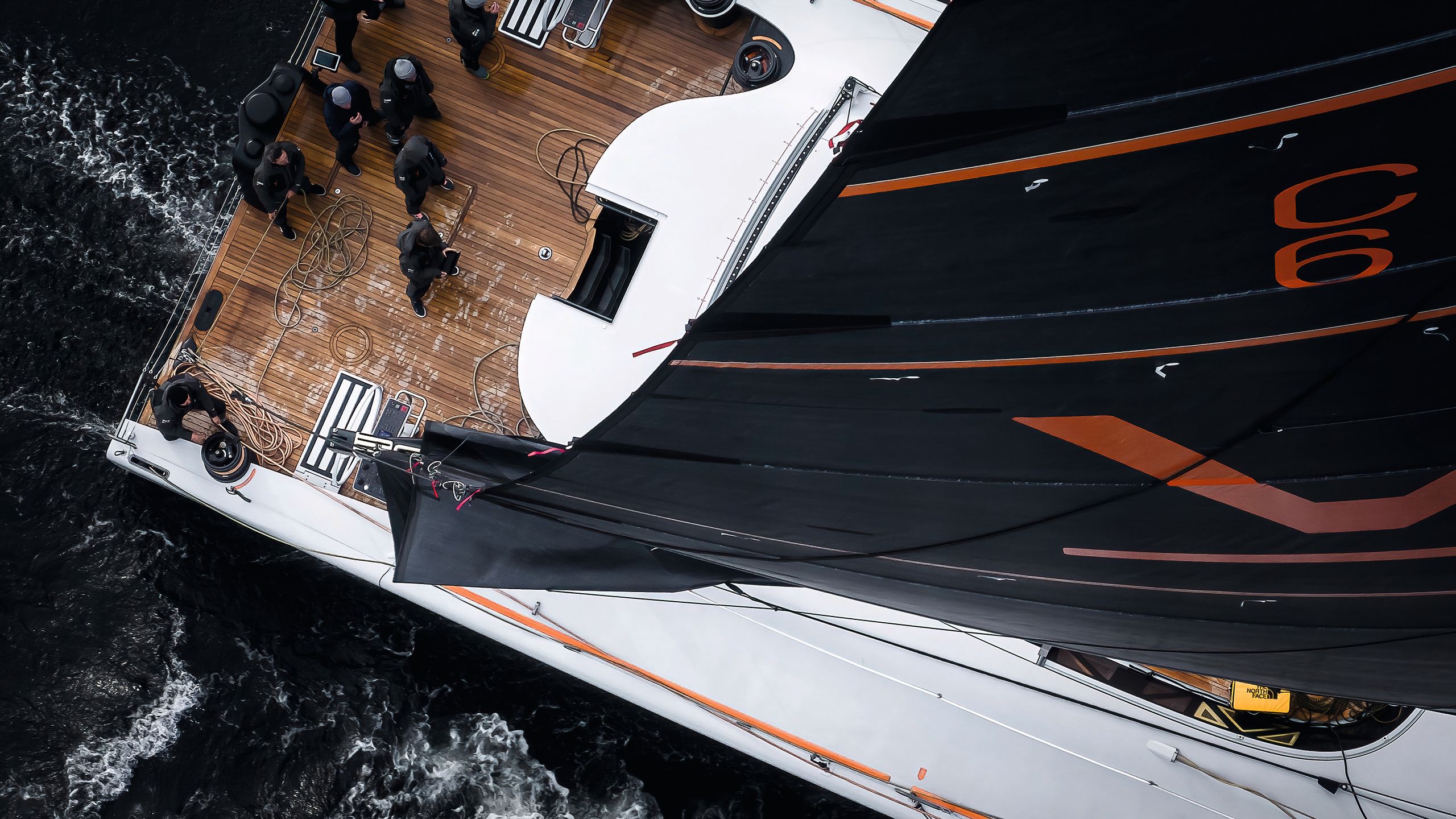
Surprisingly, instead of the T-foil style elevators on rudders that AC75s have, Raven employs powerboat technology with a series of interceptor plates extending along her transom to alter her fore and aft trim, increasing performance over a wider speed range. Although rare on sailing yachts, according to Botin Partner’s Adolfo Carrau, these are much more efficient.
A significant challenge when sailing is that Raven is in essence (not unlike the AC 75s and many of the best racing boats) an overpowered ultralight. If not kept in check, she will exceed her structural limits with potentially disastrous consequences.
Yes, she could have been made bulletproof, but that would have made her far too heavy and totally missed the point of the design. Determining a safe righting moment was vital, and her naval architects, engineers and builder had to adhere to the plan. Significantly, this limit has determined the spec of all Raven’s components, from her rig and sails to her foils to hull structure and down to the size of the sheets.
“I am not aware of any other superyacht project where achieving the target weight of the boat, down to the last kilogram, meant the difference between success and failure. If we missed target, it quite simply wouldn’t fly,” said Baltic’s executive vice president Henry Hawkins.
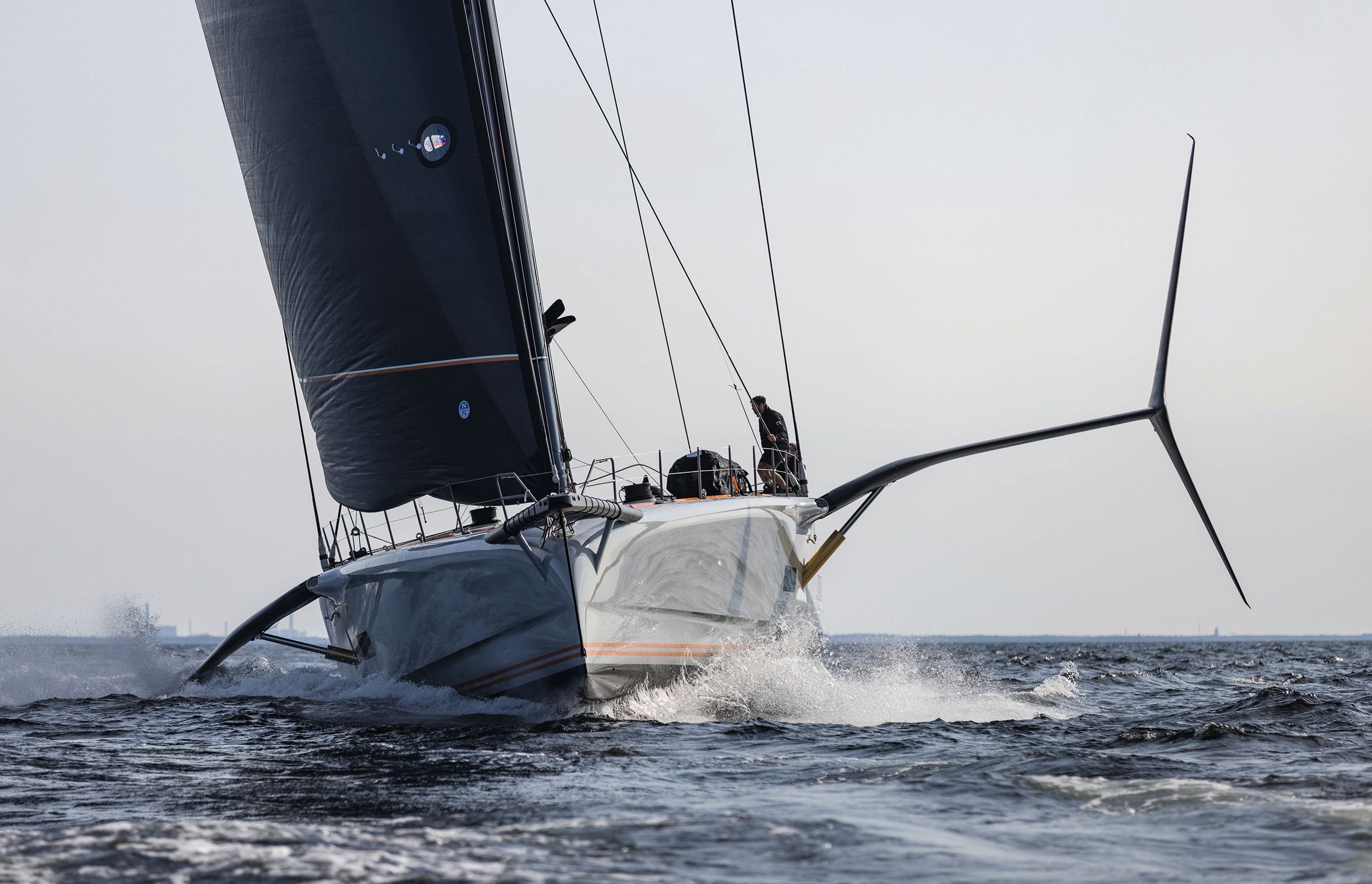
EVA-STINA KJELLMAN The yacht’s reverse sheer and “droop-snoot” bow not only aid visibility from aft when the yacht is foiling but are also more aerodynamically and hydrodynamically efficient at high speeds
EVA-STINA KJELLMAN The yacht’s reverse sheer and “droop-snoot” bow not only aid visibility from aft when the yacht is foiling but are also more aerodynamically and hydrodynamically efficient at high speeds
Ten tonnes of water ballast and the foils, which start to become effective at 12 knots of boat speed, help keep the boat upright. With her leeward foil deployed and water ballast, Raven has a righting moment substantially higher than that of an Ultim racing trimaran, so at speed, she must be constantly reined in.
Fortunately, one hand is firmly on the brakes (or in this case the mainsheet) by Raven’s crew of top-level pros (ultimately she will sail with around 16) led by Swedish round-the-world and ORMA 60 trimaran sailor Nylöf and her experienced French captain, Damien Durchon. Durchon has previously been captain on record-holder Comanche and a regular hand on both Mari Cha III and IV and another Baltic masterpiece, Hetairos.
Below deck, Raven has superyacht mod-cons but with a fit-out that Jämsén and his team at Aivan kept feather-light with creative thinking
While it is tempting to focus on Raven’s top speed – currently 30-plus knots – most impressive is her ability to maintain high average speeds. Already she can sit on 25 to 27 knots comfortably, so it seems likely that she can achieve 600-plus-nautical-mile/days (a foiling IMOCA currently holds the monohull 24-hour record of 641 nautical miles).
This is extra impressive for a boat equipped with a bow thruster, air conditioning, actual furniture, a dishwasher and a teak deck.
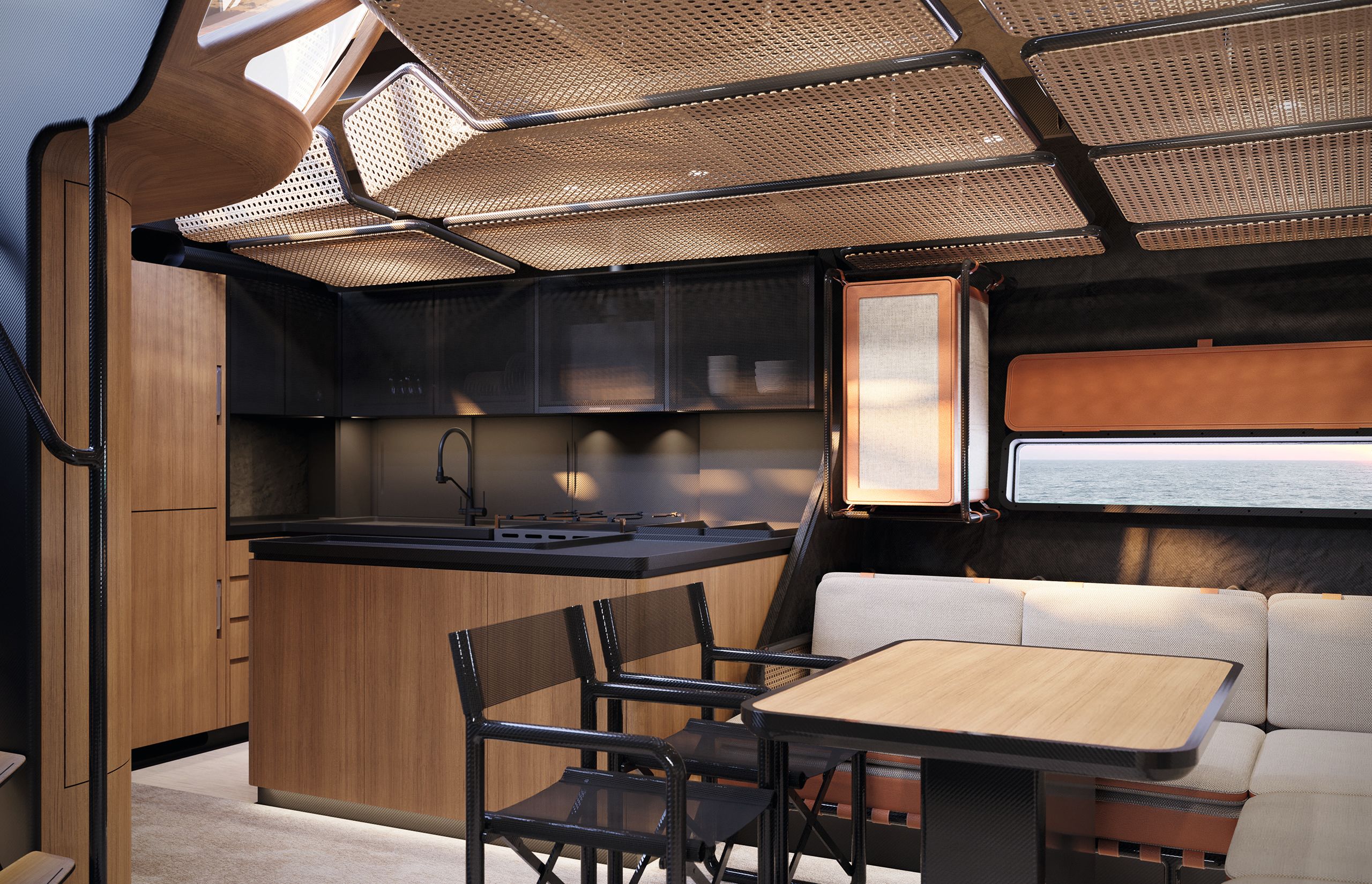
COURTESY BALTIC YACHTS
COURTESY BALTIC YACHTS
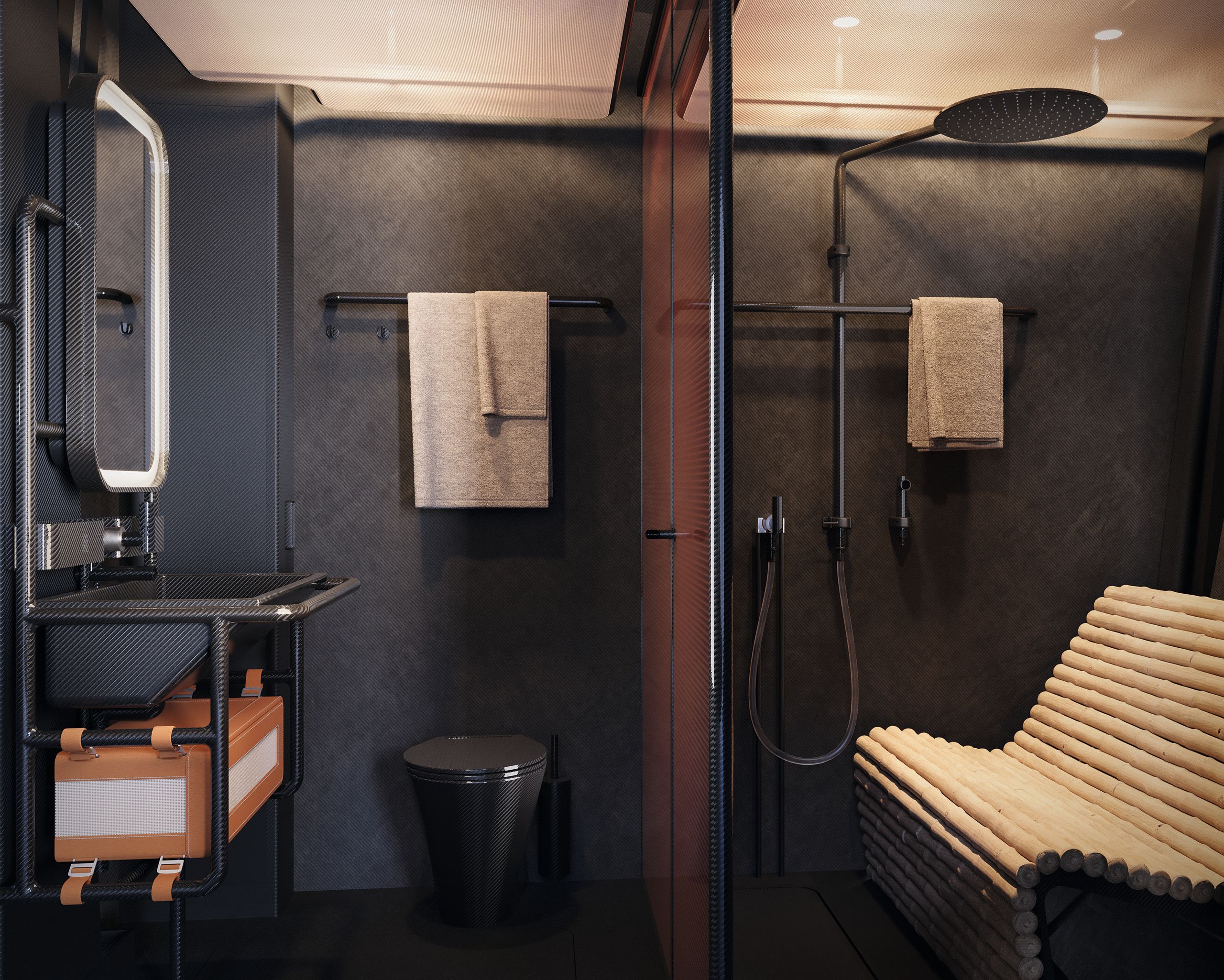
COURTESY BALTIC YACHTS
COURTESY BALTIC YACHTS
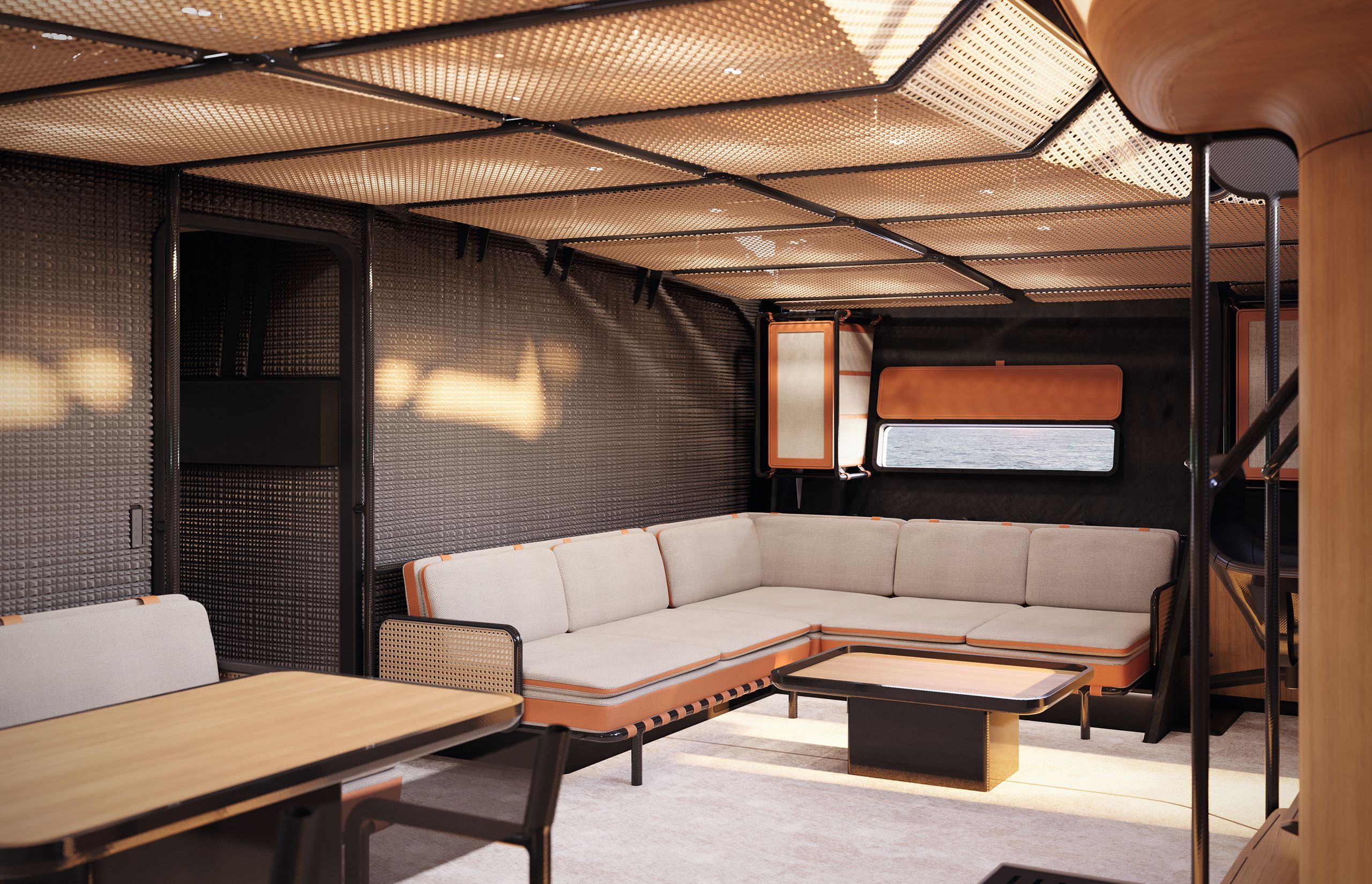
COURTESY BALTIC YACHTS
COURTESY BALTIC YACHTS
The minimalist, modern interior style is highlighted by the glass sides of the cockpit. They bring light to the owner’s cabin and to the main saloon. On Raven, the point is to showcase the interior structure, not hide it. Interior wall and ceiling panels are carbon-fibre tube frames covered in rattan, selected both for style and weight. Raven provides accommodations for four guests in two cabins, with the owner’s cabin aft. The owner's cabin features a double centreline berth that can be folded up against the interior bulkhead during racing
On Raven, the foils and other stability tools are not just for performance; they also improve comfort. Fully foiling offshore race boats are among the most brutal, uncomfortable rides in sailing, but Raven achieves high speeds in a better-mannered fashion.
Her skimming mode and momentum from her displacement and hull size prevent the severe accelerations of full foilers. In addition to providing stability and altering fore-aft trim, her water ballast can calm her down if conditions get boisterous. Trim tabs can be used to reduce heel – a more upright ride improves sailplan efficiency, and makes the ride more pleasant.
Presently, the crew is finding the best combinations of the many functions to provide optimum speed and comfort so many can be automated. This will enable her to be sailed efficiently by a reduced crew when cruising. “It is a system that learns as you get better using it,” explains Nylöf.
Key to Raven’s success as a high-speed superyacht was a strict construction diet imposed via a detailed weight audit carried out during her meticulous build at Baltic Yachts. For example, carbon fibre female tooling allowed a coating rather than filler to fair her immaculate intermediate modulus carbon-Nomex skin.
Her North 3Di carbon-fibre sails and Harken Air winches are specced for maximum strength and minimum weight. The result is that Raven’s displacement of around 50 tonnes is almost half that of the Baltic 110 Zemi and only slightly more than a Wallycento.
While on many superyachts interior designers aim to hide structure, on Raven, Jämsén’s team flaunts it
Below deck, Raven has superyacht mod cons but with a fit-out that Jämsén and his team at Aivan kept feather-light with creative thinking. For example, SeaDek, typically used on the cockpit sole, is used below decks not just on the floor but also as a wall-covering material where its foam-type property provides some sound insulation. Such was the extent of Raven’s diet that SeaDek’s application glues were compared, resulting in a 7kg weight saving.
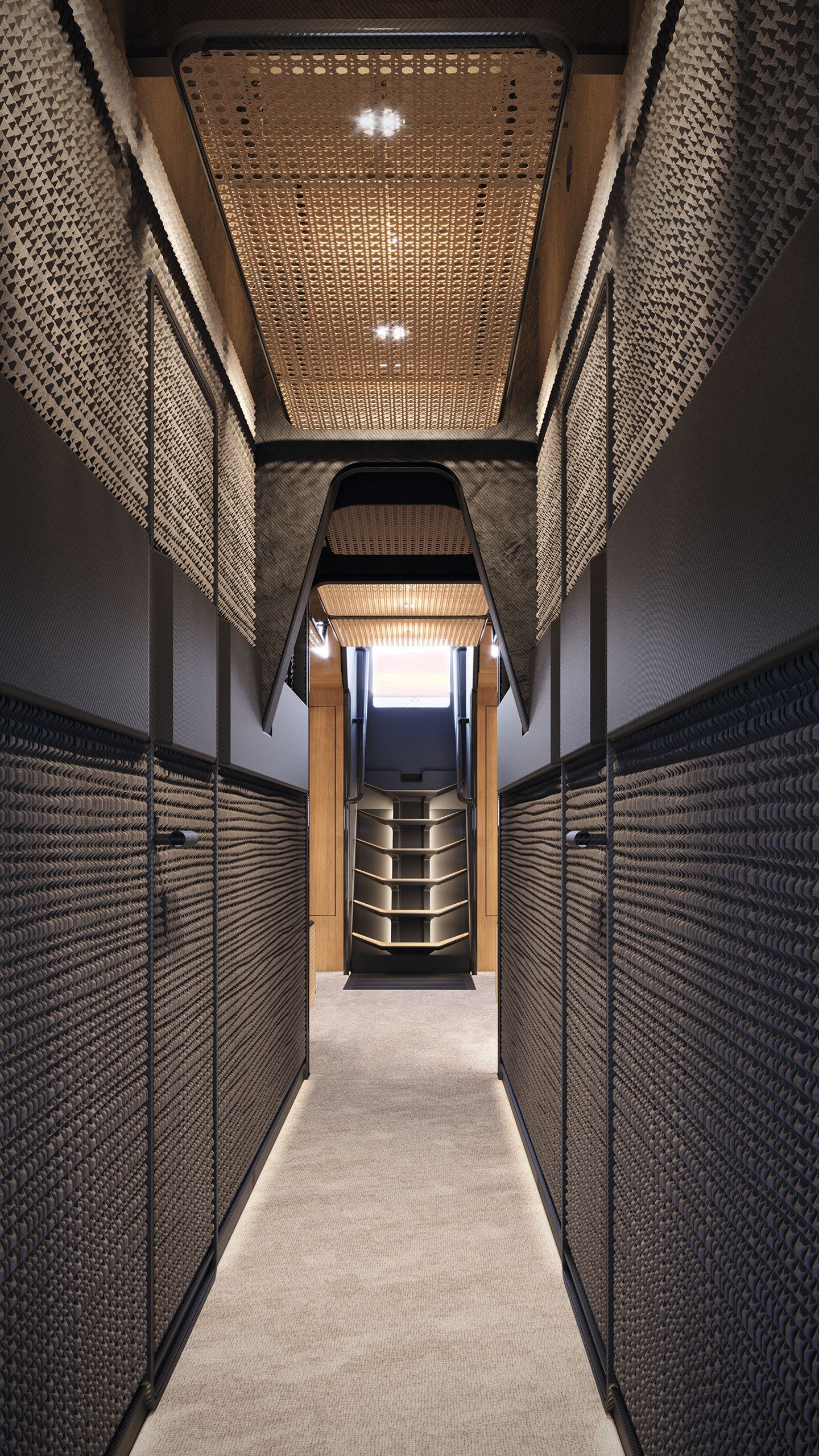
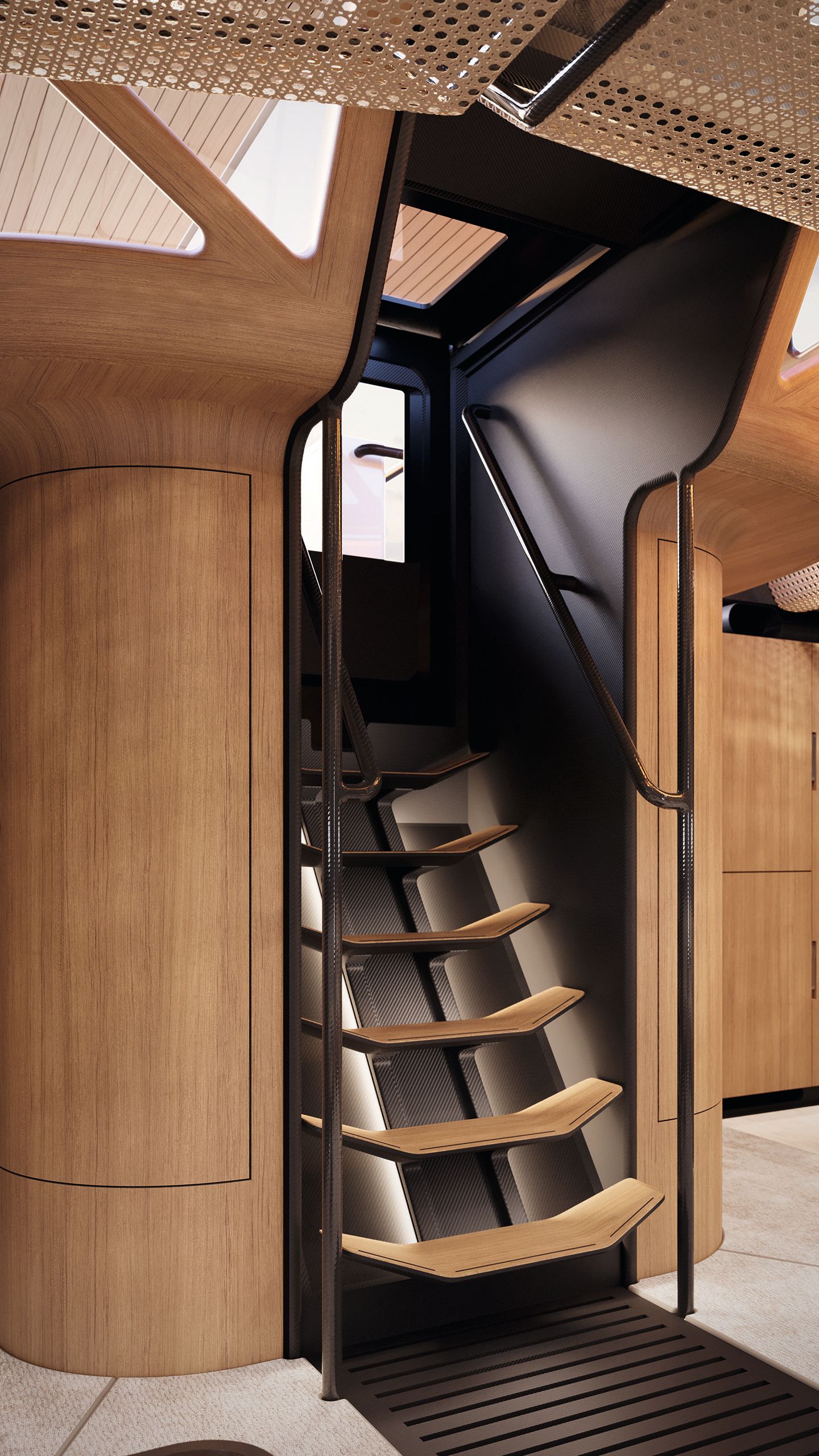
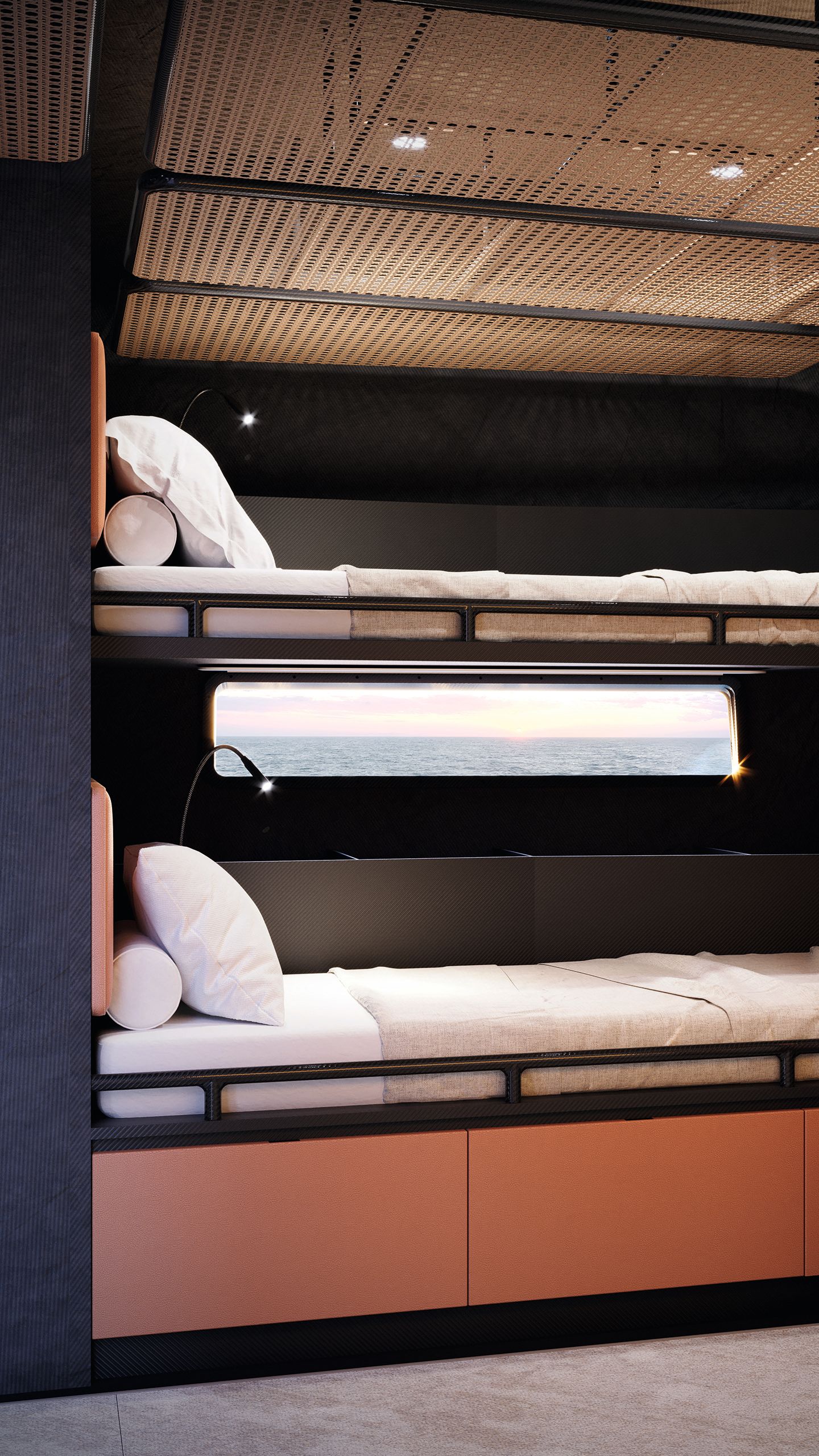
COURTESY BALTIC YACHTS
Raven’s stylish interior was designed by award-winning Finnish designer Jarkko Jämsén with the goal of keeping her as light as possible. Bamboo and rattan were widely used throughout.
For wall and ceiling panels elsewhere, carbon-fibre tube frames are covered in rattan. While on many superyachts, interior designers aim to hide structure; on Raven, Jämsén’s team flaunts it.
Technology is so vital, the standard of Baltic Yachts’ laminating inside the hull so meticulous, and the wiring and piping so exceptionally neat, they featured these elements. Even hydraulic rams operating rig functions are there to be admired.
Naturally, a lot of thought has also gone into exterior detail. Raven has a working cockpit aft recessed to offer protection from the elements. The main deck surface extends aft, becoming a protective overhang above the sliding door linking cockpit and swim platform to the aft saloon. When cruising, a fold-down bed turns this into the owner’s suite.
On deck, the most radical design feature is her large oval central guest cockpit. This sunken area has windows around its perimeter spilling light into the saloon below. The cockpit can be fully open, but for protection, the cockpit’s aft section folds up and over to become the roof of the forward half.
The glazing here is Perspex, saving 250 kilograms, and the mullions are carbon-fibre faux painted to mimic wood. Of all Raven’s trick features, this cockpit with its integrated canopy – he calls it the bird’s nest – is Jämsén’s favourite. The inspiration was the drop top of a 2005 Ferrari Superamerica.
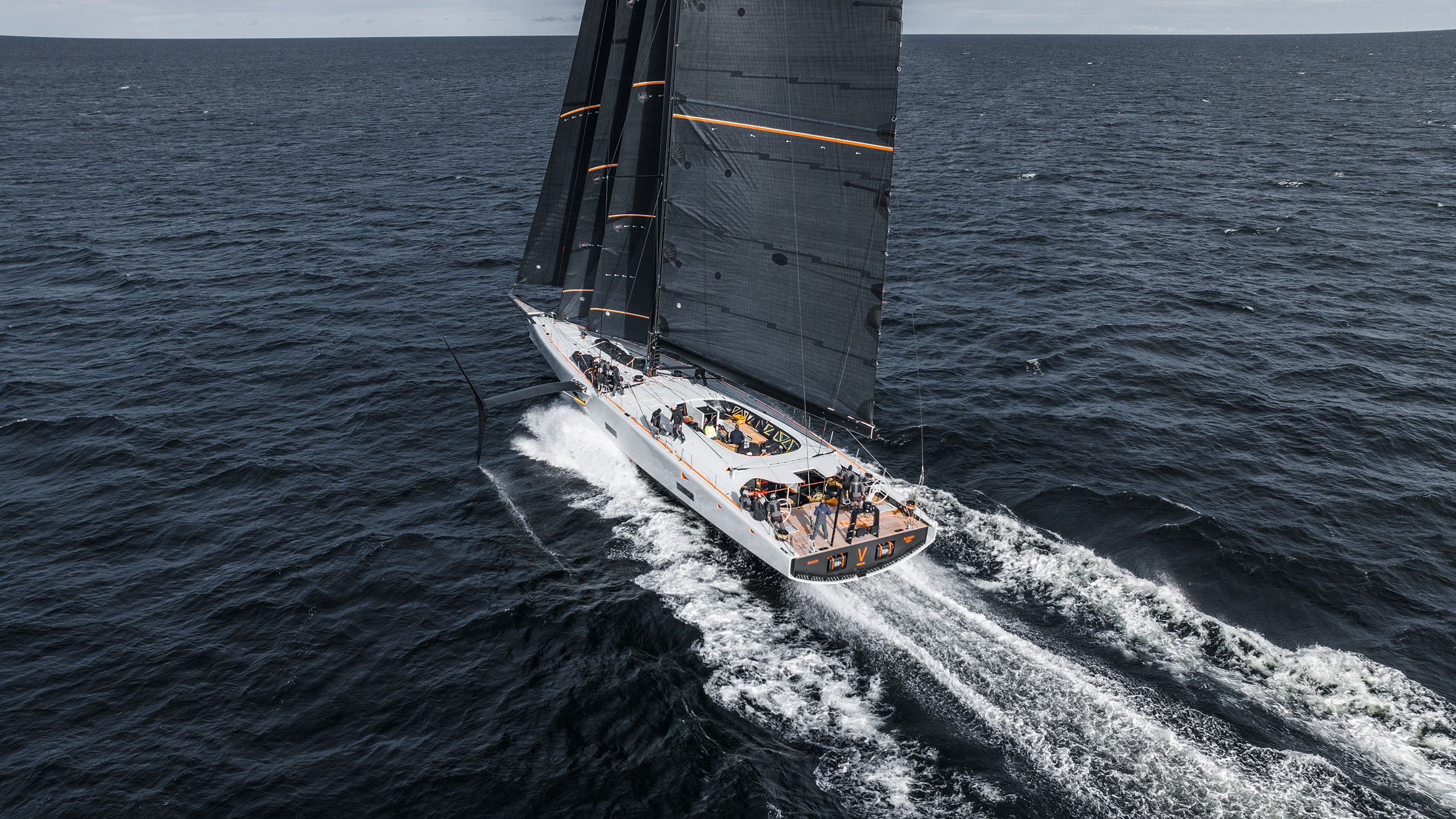
“I’m pleased we made the inverted window concept to get light inside the saloon, and the fact we achieved that without killing the [flushdeck] monocoque feeling of the superstructure,” he says.
Raven has diesel-electric hybrid propulsion with twin 80kW Yanmar gensets. These, outputting 700 volts, drive a 130kW Phi-Power AG motor and a retractable propeller with carbon fibre blades and a titanium hub. Twin lightweight battery banks enable her to run for long periods under electricity alone.
The owner and his team are patiently maximizing Raven’s performance. She recently won a Judge’s Special Award at the World Superyacht Awards “for pushing the boundaries” of yacht design.
Now let’s see if any other superyacht sailing boats wish to go foiling.
EXPERT TOUCH
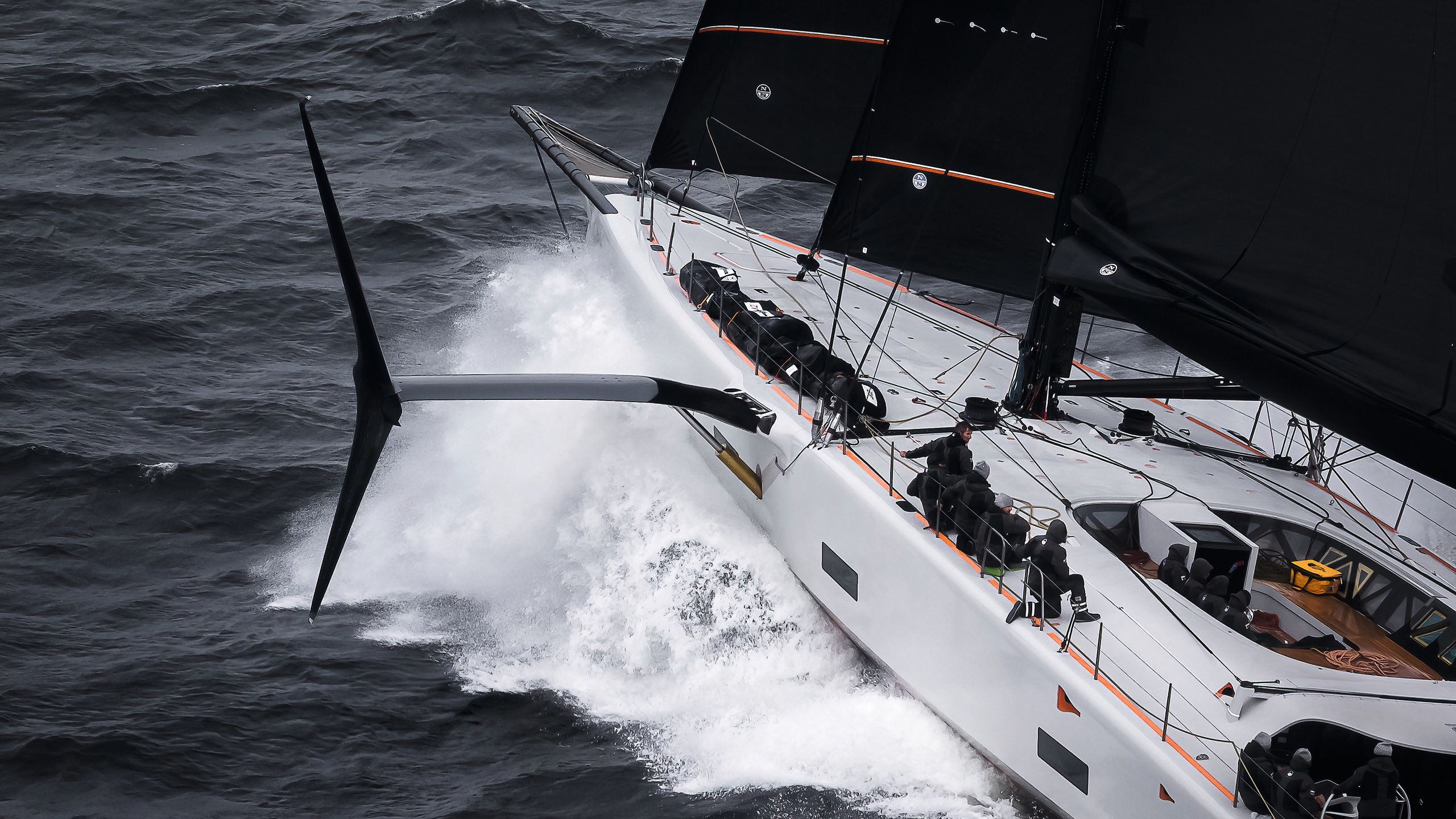

An innovative yacht such as Raven raises questions, so BOAT went to the source: naval architect Adolfo Carrau of Botin Partners.
How far do Raven’s foils extend from the hull, and are they always in use?
They extend approximately seven metres to leeward of the yacht, and yes, the foils are always used while sailing in any wind or sea state condition, although the 10 tonnes of internal water ballast is sufficient for her to sail without the foils.
Why this type of foil?
This boat will spend most of the time in lighter wind regions and in the Mediterranean Sea. The foils are designed to be very efficient at low boat speeds and increase performance and dynamic righting moment as the boat accelerates. The foils also enhance comfort while cruising as the motions are dampened. Raven sails very fast with very low heel angles – about 10 degrees while reaching.
Why do you have interceptors mounted on the transom?
The foils lift the bow, but [for performance] we needed to control the boat’s trim. We began the design fitting horizontal elevators mounted on the rudder blades, America’s Cup style. But these have a few drawbacks for a high-performance superyacht: more chances to hit marine life, catch fishing nets or debris, and increase the chances of damaging the rudders.
From a performance point of view, the elevators actually would slow the yacht at lower wind speeds. The advantages of the stern-mounted interceptors are that these can be deployed only when needed to vary the longitudinal trim of Raven, making them extremely efficient.
Their variable depth allows us to fine-tune trim and especially to reduce hull drag at high speed. The interceptors on Raven start to work when the boat speed is above 18 to 20 knots. The Humphree interceptors used come from the high-speed powerboat industry. There are four independently actuated devices mounted at the stern that can extend to a depth of about 50mm.

An innovative yacht such as Raven raises questions, so BOAT went to the source: naval architect Adolfo Carrau of Botin Partners.
How far do Raven’s foils extend from the hull, and are they always in use?
They extend approximately seven metres to leeward of the yacht, and yes, the foils are always used while sailing in any wind or sea state condition, although the 10 tonnes of internal water ballast is sufficient for her to sail without the foils.
Why this type of foil?
This boat will spend most of the time in lighter wind regions and in the Mediterranean Sea. The foils are designed to be very efficient at low boat speeds and increase performance and dynamic righting moment as the boat accelerates. The foils also enhance comfort while cruising as the motions are dampened. Raven sails very fast with very low heel angles – about 10 degrees while reaching.
Why do you have interceptors mounted on the transom?
The foils lift the bow, but [for performance] we needed to control the boat’s trim. We began the design fitting horizontal elevators mounted on the rudder blades, America’s Cup style.
But these have a few drawbacks for a high-performance superyacht: more chances to hit marine life, catch fishing nets or debris, and increase the chances of damaging the rudders. From a performance point of view, the elevators actually would slow the yacht at lower wind speeds.
The advantages of the stern-mounted interceptors are that these can be deployed only when needed to vary the longitudinal trim of Raven, making them extremely efficient. Their variable depth allows us to fine-tune trim and especially to reduce hull drag at high speed.
The interceptors on Raven start to work when the boat speed is above 18 to 20 knots. The Humphree interceptors used come from the high-speed powerboat industry. There are four independently actuated devices mounted at the stern that can extend to a depth of about 50mm.
First published in the September 2024 issue of Life Under Sail. Get this magazine sent straight to your door, or subscribe and never miss an issue.

